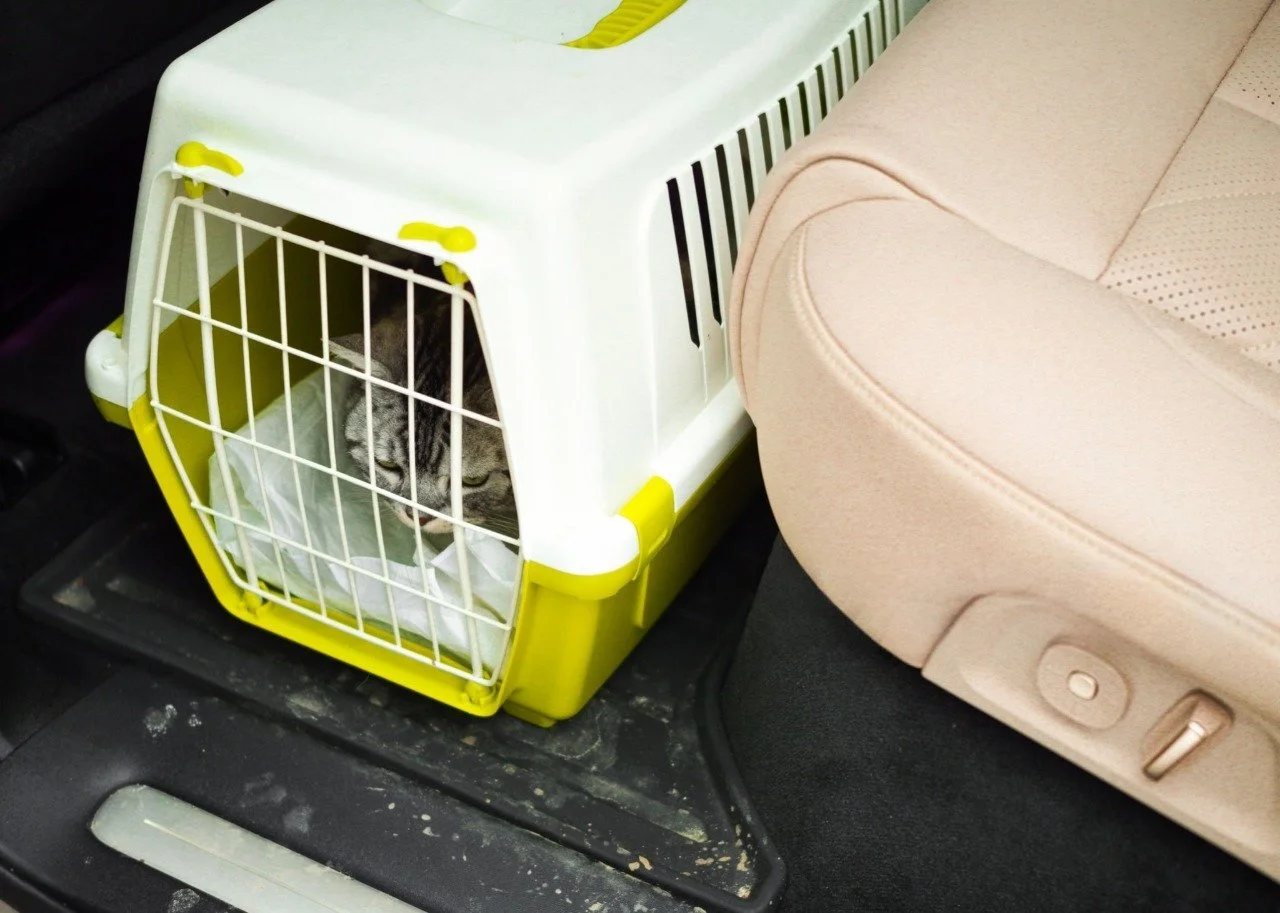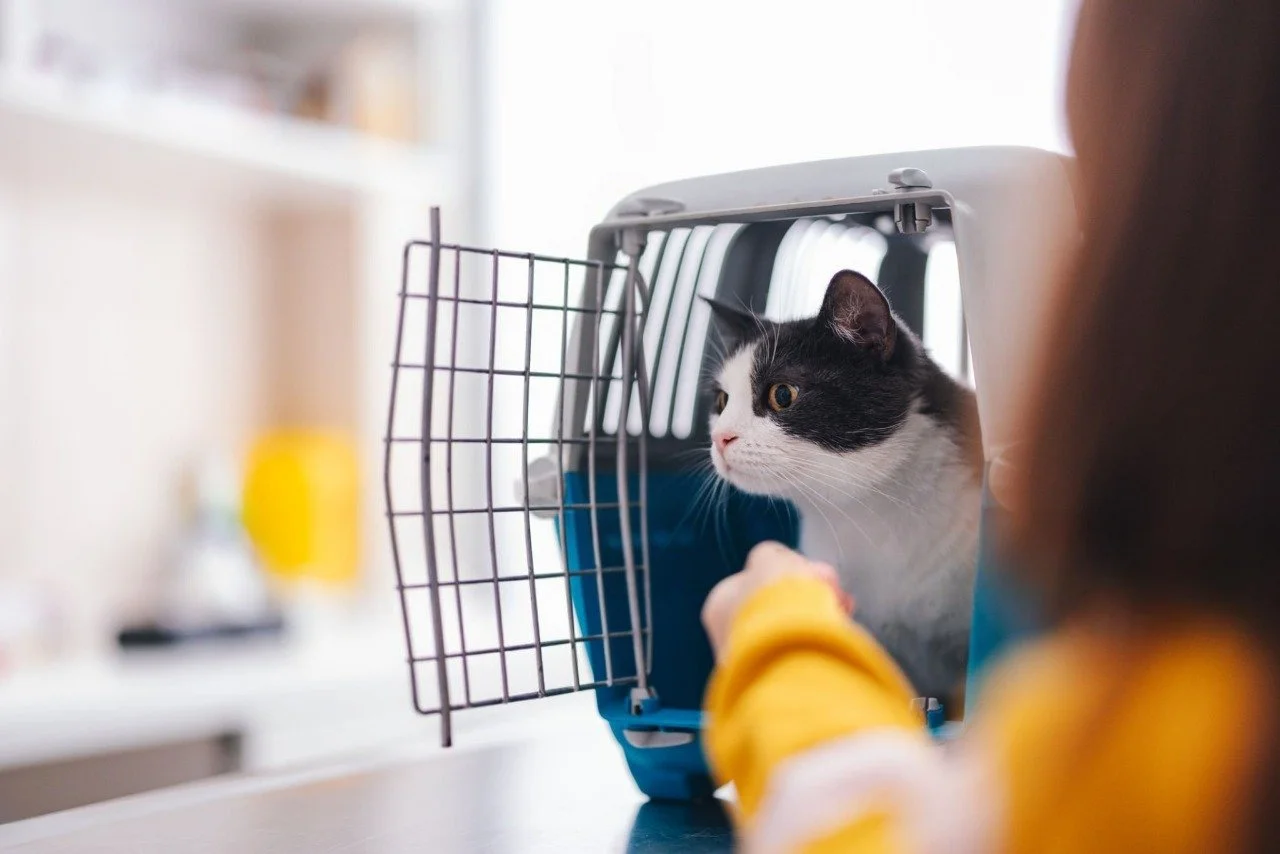Best Cat Carrier for Vet Visits? Here’s What Actually Works
It’s easy to overlook the role a carrier plays in your cat’s vet visit. You might assume anything with a zipper or handle will do, but the wrong carrier can turn a routine checkup into a full-blown struggle. A poorly designed carrier doesn’t just make things harder for you—it can also increase stress, cause safety issues, and limit how much your vet team can actually help.
During my time working in general and feline-exclusive clinics, I saw the full range: well-worn plastic crates that had clearly been through it all, bubble backpacks with barely any airflow, and even cardboard boxes clumsily duct-taped shut. Some carriers made the visit smooth and efficient. Others? Not so much. Choosing the right carrier sets the tone for the whole appointment and that starts well before you even leave the house!
What makes a good carrier?
The goal is to find something that helps your cat feel safe and lets you and your vet work with ease. Here’s what to focus on:
Top access
This allows for gentle handling and gives your vet the option to remove your cat without tipping or dragging.Keeps its shape
A carrier that holds firm during transport prevents your cat from feeling unstable.Balanced ventilation
Mesh panels or side openings are great, but carriers that leave your cat exposed on all sides can heighten anxiety.Wipeable interior
Nerves can lead to accidents. A carrier that’s quick to clean is better for everyone.Proper sizing
Your cat should be able to stand, turn, and lie down comfortably without sliding around
Styles: the good and the not-so-great
Not every carrier is built for a vet visit. Here’s how the most common options hold up.
Hard-sided, top-loading
These are clinic favorites. They’re sturdy, easy to disinfect, and often allow the top to be removed. That means your vet can sometimes do parts of the exam with your cat still in the base. They’re especially helpful for cats who freeze up or dislike being handled.Structured soft-sided
These can work well, especially for travel, but they need structure. Look for a firm base, top and side openings, and mesh panels that provide airflow without turning the carrier into a spotlight. Lockable zippers are a plus.
What to avoid
Some carriers look cute or convenient but make vet visits harder. Try to steer clear of:
Front-only openings
Collapsible, sagging walls
Open crates or baskets
Cardboard boxes
Bubble backpacks or novelty shapes with poor visibility and limited entry points (even though they’re really cute)
How to make the trip smoother
Even the best carrier won’t help much if your cat sees it as a threat. That’s why how you use the carrier at home matters just as much as which one you choose. Instead of storing it away, try leaving the carrier out in a quiet corner. Line it with a blanket or towel, toss in some treats, and let your cat investigate on their own terms. Over time, it becomes just another place in the house—not a signal that something stressful is coming.
On travel day, you can help by:
Spraying the inside with a calming pheromone like Feliway, 15–30 minutes ahead of time
Placing the carrier on the floor of the back seat or behind the passenger seat for stability
Covering it loosely with a towel to block out visual stressors
Pro Tip: The less your cat can see in a high-stimulus environment like a clinic lobby, the more settled they tend to feel. This is why covering the carrier, even partially, can help create a sense of shelter.
Carriers that actually work
If you’re in the market for something new, here are a few models I’d feel confident recommending based on real-life use, both inside and outside of the clinic. All of them are available on Chewy and meet the vet-friendly criteria above!
Frisco Two-Door Top-Load Plastic Carrier
Simple, secure, and opens from both the top and front. A reliable choice for nearly any cat.
Sherpa Original Deluxe Soft Carrier
A lightweight option that doesn’t lose its shape. Offers solid ventilation, side and top entry, and a cozy interior.
Petmate Two-Door Small Kennel
Reinforced plastic and metal doors make this a sturdy option for cats who need extra containment. Good airflow, solid latches, and top-load functionality.
FAQs
What if my cat won’t go near the carrier?
Try reintroducing it slowly. Place it in a quiet room with treats or toys nearby, then inside. You can also talk to your vet about calming options for travel if needed.Can I bring both of my cats in one carrier?
Even bonded cats may fight when stressed. Separate carriers makes safer for everyone and easier for your vet’s team to handle during appointments.Where’s the best place to put the carrier in the car?
The floor behind the passenger seat is ideal. It’s low, stable, and away from direct airflow. If using a seat, secure the carrier with a seatbelt.Do I really need to leave the carrier out at home?
Not needed all the time, but regular exposure helps! Letting your cat explore or nap inside between appointments makes the carrier less intimidating.Is a high-end carrier worth it?
If your cat travels often or struggles with anxiety, it can be. But plenty of mid-range carriers offer everything you need without breaking the bank—durability, ease of access, and comfort.
Extra, extra! Want more vet content? Check this out: Emergency Vet or Urgent Care?
Final thoughts
A carrier should be more than a last-minute grab from the closet. When chosen well and introduced properly, it becomes a safe zone for your cat and a helpful tool for you and your vet team. The best ones aren’t just convenient, they’re designed with your cat’s comfort in mind!
For you, it should make transport simpler—not something you dread every time an appointment comes up.







